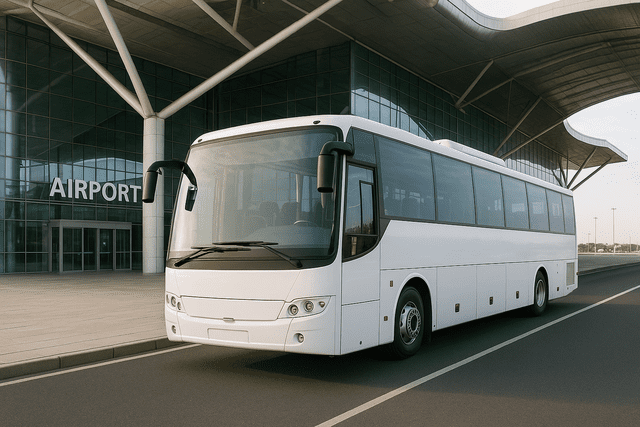
How to Optimize Airport Transfers for Your Team: 5 Key Strategies
In the modern fast-paced business environment, ensuring smooth transportation of employees is not just a logistical matter but also reflects a commitment to comfort, efficiency, and professionalism.
Airport transfers are amongst the most important ways when traveling, ensuring employees are well taken care of, first impressions are strong, and schedules are well maintained. Businesses must ensure organization, reliability, and comfort when maximizing employee airport transfers. The following are five practical tips that will help streamline it:
Table of Content
1. Plan Ahead for Smooth Coordination
Proper airport transfers are defined as timely transfers and require planning. In general, transfers in the case of several employees or larger groups should be scheduled well in advance. It is necessary to be aware of the flight schedule and the time zone and of any delays that the flight may have, so that the driver arrives on time, thus reducing any waiting time employees may have.
Shared calendars or booking systems with centralized control can give HR departments or office managers oversight and remove any confusion. Early planning will also give the flexibility to make changes to a pickup time due to any changes in travel plans. Being prepared up front can prevent last-minute disruptions and highlight an instance of operational excellence by the organization.
2. Ensure Accessibility and Comfort
The employee experience should be at the center of every airport transfer strategy. Comfort standards should guide the selection of vehicles depending on the distance and duration of travel. Features such as air conditioning, Wi-Fi, power outlets, and reclining seats make the flight much more comfortable.
Special consideration for employees requiring accessibility should also be included, with wheelchair access or appropriate assistance during transport. Service offerings should be based on employee feedback in order to continue improving comfort and convenience for future transfers. Prioritizing these elements fosters a sense of care and inclusivity within the workforce.
3. Consider Buses When Transporting Groups
Buses for hire will generally offer the most practical and cost-effective solution when transferring teams or larger groups of employees. These vehicles offer plenty of room, enabling them to move together in comfort while bonding as a team.
Instead of having to manage and coordinate a dozen different cabs or ride-shares, buses concentrate under one logistical umbrella, minimizing delays and also bringing down the cost on a per-person basis.
Businesses that invest in reliable charter bus services benefit from professional drivers, punctual service, and flexible itineraries tailored to meet the needs of their groups. This ultimately smooths the entire coordination process and leaves a good impression for both employees and clients.
4. Choose Suitable Transport Options Abroad
With cross-border travel, a whole new level of complexity is added. Different countries apply different parameters to transport safety, dependability, and availability. Ideally, before shipping employees abroad, the company should look for and ascertain trusted local transport providers.
Partnering with regional ground transportation services with multilingual drivers and customer support could be a strategic approach. Furthermore, services with transparent pricing and firm reputations ought to be given priority to prevent potential troubles in the form of misunderstanding and overcharging. Informed choices abroad will go a long way in providing assurance and confidence to employees from arrival to departure.
5. Emphasize Communication and Contingency Plans
The coordination of airport transfers is an exercise in effective communication between the various actors in the supply chain. Employees should be given clear instructions on any specifics relative to the transfer, such as pickup time, contact numbers of assigned drivers, and relevant vehicle descriptions.
Automated messaging systems or mobile apps can be utilized to promptly inform all parties of any changes that might occur. A company should also anticipate problems such as delays in arrivals or last-minute cancellations. Any such disruption can be greatly softened with a flexible provider, one with personnel always available to respond. Transparent communication and proper back-up planning increase employee trust and help alleviate further travel anxiety.
In conclusion, a smooth transfer from the airport is proof that, in the eyes of the company, no detail is too small, and the employee’s time and comfort have been respected. When plans feature advanced scheduling, transport modes that can be scaled, international considerations, comfort, and communication, travel will be made easier and more enjoyable for all. The thought and planning that go into arranging transport will, in turn, make other aspects of the endeavour easier and promote a great business travel experience.


